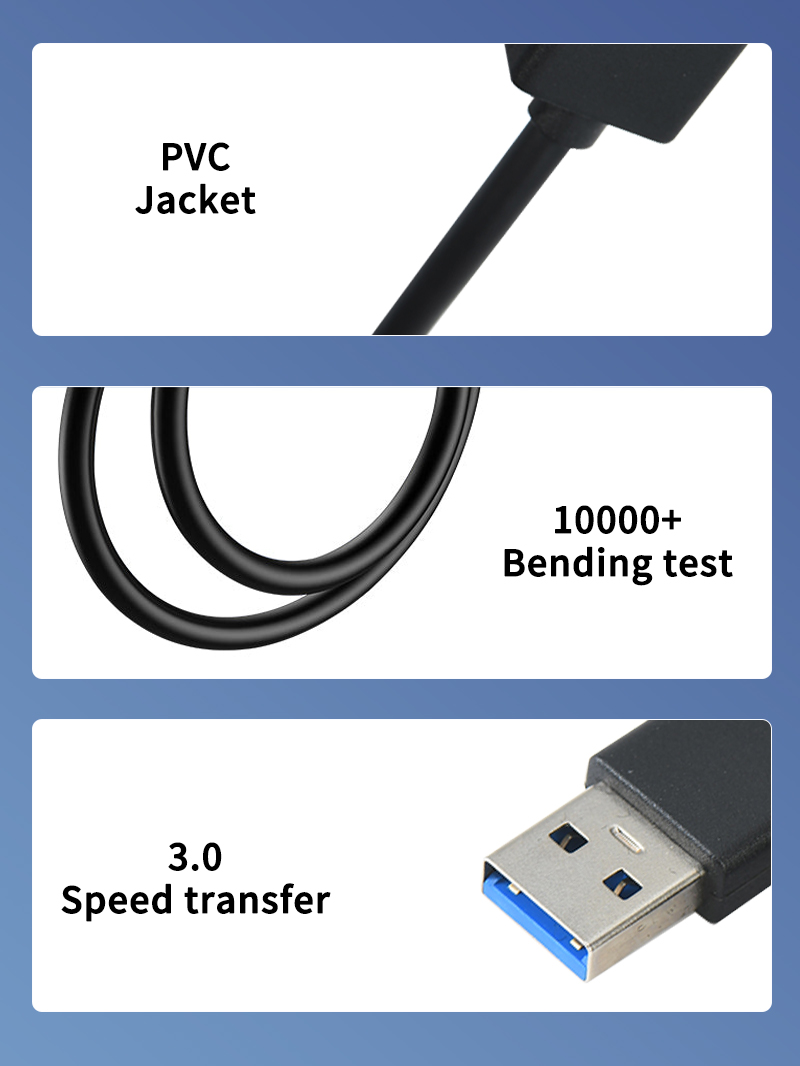Manufacturer Of High Quality Data Cable
Manufacturer Of High Quality Data Cable
In today’s digital world, fast data transfer is essential for both personal and professional use. Whether you are moving large videos, syncing devices, or charging multiple gadgets, the type of USB cable you use plays a major role in overall performance. However, not all cables deliver the same speed. Many people see labels like USB 2.0, USB 3.0, USB 3.2, or USB4 and wonder what these terms actually mean. To understand what makes a cable high-speed, we need to look closely at USB protocols and how they work.
To begin with, USB protocols define how a device communicates with another device. They set the rules for data transfer, charging capability, and compatibility. As technology grows, these protocols evolve to support higher speeds and more power. Because of this, when you compare a basic cable to a high-speed USB cable, you are actually comparing different generations of USB standards.
USB protocols ensure smooth communication between laptops, phones, storage devices, cameras, and many more electronic products. With every new version, users gain better performance and a more efficient experience.
As we move forward, it becomes easier to understand what makes a cable “high-speed” by looking at how USB standards have improved over time. Each version increases the maximum transfer rate.
Here is a simple breakdown:
USB 2.0 – Up to 480 Mbps
USB 3.0 / USB 3.1 Gen 1 – Up to 5 Gbps
USB 3.1 Gen 2 – Up to 10 Gbps
USB 3.2 – Up to 20 Gbps (depending on lane configuration)
USB4 – Up to 40 Gbps
These numbers show that a high-speed USB cable must support a newer protocol. In other words, the cable must match the device’s required data rate. For example, if your laptop and SSD support 10 Gbps but your cable only supports USB 2.0, the transfer speed will be limited by the slowest part of the connection.

Next, it is important to note that connector types also influence performance. Different connectors support different protocols and use different internal wiring structures.
This is the classic rectangular connector used on many computers. While Type-A supports high-speed protocols, its physical design limits future upgrades.
Often used in printers, scanners, and some audio devices. It usually appears in devices that do not require extreme speed.
Today, USB Type-C is most commonly used in high-speed devices. It supports the latest USB protocols, including USB4. Its reversible design and a higher number of internal pins allow it to carry more data at faster speeds. This makes Type-C the best option for fast USB data transfer and high-performance charging.
Moving on, the internal construction of a cable has a direct impact on whether it can truly deliver high-speed performance. Even if a cable uses the right connector, poor construction can reduce speed or cause unstable transfers.
Key features include:
Data lane design – High-speed USB cables require multiple data lanes to carry more data simultaneously.
Shielding layers – Good cables use several layers of shielding to reduce interference and improve stability.
Conductor quality – High-purity copper ensures steady data flow and reduces signal loss.
Reinforced joints – A durable structure prevents damage from bending, which helps maintain long-term performance.
Because of these design factors, choosing a high-speed USB cable is not only about the label. The internal engineering determines whether the cable can fully support fast USB protocols.
To help users choose the right cable, manufacturers often mark cables with specific information. Understanding these markings makes the buying process easier.
Look for:
Protocol identification – Labels like “USB 3.2 Gen 2” or “USB4” usually appear on packaging.
Speed rating – Some cables show numbers such as 5 Gbps, 10 Gbps, or 20 Gbps.
Certification logos – Official USB-IF logos indicate that the cable meets required standards.
Connector type – USB Type-C cables typically support higher speeds, but you still need to check the protocol.
By checking these details, users can avoid slow connections and choose cables that match the performance of their devices.

Finally, to select the correct cable for your needs, it helps to consider the type of device you are using and the operations you perform.
Here are some practical suggestions:
For external SSDs, choose at least USB 3.1 Gen 2 (10 Gbps).
For 4K video capture, use USB 3.2 or higher.
For laptops and phones, choose USB Type-C cables that support both fast data transfer and safe charging.
For future-proofing, consider USB4 cables that deliver the highest speed currently available.
By making smart choices, you ensure a stable and fast data transfer experience across all your devices.
USB protocols play a central role in determining cable performance. As USB standards continue to develop, users can enjoy faster, safer, and more efficient data transmission. A high-speed USB cable must support the latest USB protocol, use the appropriate connector, and have strong internal construction. By understanding these details, you can make confident decisions and avoid slow or unstable data transfer.
If you are looking for reliable cable solutions with strict quality control, advanced certification, and strong R&D support, JMTJM offers professional USB cables, data transfer cables, and custom cable solutions for a wide range of industries. Contact JMTJM today to discover high-performance cables you can trust.